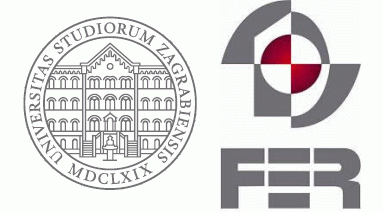Presenting the paper
The technical program is organized in 90 minutes’ sessions. With 5 papers in each session, each paper is allocated about 18 minutes “total time” which includes introducing the speaker, exchange of speakers, and questions from the audience. We recommend that your presentation takes no more than 15 minutes, leaving a few minutes for speaker introduction and questions from the audience.
Substitute presenters are strongly discouraged. If the paper is presented by a substitute, he or she must be sufficiently familiar with the material being presented to answer questions from the audience. In addition, the substitute presenter must contact the Session Chair in advance of the presenter’s session.
All presentation rooms will be equipped with a PC, a microphone, a lectern, and a pointing device. Presentation files can be uploaded in advance or brought on a USB memory stick and copied to the PC during the break. Accepted file formats include MS Powerpoint and PDF. If you need audio speakers, or plan to use any other special audio or visual equipment, please contact Ms. Aleksandra Cerekovic (aleksandra.cerekovic@fer.hr) no later than Monday, June 24, 2013.
We discourage the use of individual laptops if it can be avoided. If you must use your own laptop, please check that it works well with the projector supplied before the session starts (preferably during the break – someone will be there to assist you).
Preparing your slides
Here are some useful guidelines for preparing your presentation (mainly taken from the IEEE Guidelines for Preparing Effective Presentations):
- Your slide presentation should emphasize the most important points and ideas of your oral presentation. Use the slides to reinforce, clarify, illustrate or highlight individual points.
- Make sure that the slides give answers to basic questions: WHAT you did, WHY you did it, and HOW.
- Keep it simple. It is easier for the audience if you use three simple visuals than a single complex one.
- Focus on one idea at a time. To include three or four ideas in a single slide usually detracts from your presentation and is apt to confuse your audience.
- Keep statements simple and to the point, using key words and phrases. Do not repeat the text of your presentation word-for-word on the visual.
- Remember that people retain information best through a picture or a chart than words.
- Consider audience size. Slides must be prepared properly so that they are clear to even those at the back of a large room.
- Fonts should be clear and easy to read. Use Arial, Tahoma, Helvetica, or similar sans serif fonts. Decorative fonts are not recommended. Use only one typeface per visual. Add variety by using different sizes and bolding title lines.
- Use contrasting colors for lettering and background (for example, blue or black letters on white background, or colored letters on dark background (yellow or white on dark blue background).
- Use colorful background, colored text, animations, and other decorative elements with good measure.
- Proofread very carefully. Try to have someone else proof in addition to yourself. It is hard to overlook errors when they are magnified in front of an audience.
- Test your presentation ahead of time. Make sure it is easy to read from an appropriate distance, and that everything is in the proper order.
- Rehearse your talk to make sure it takes no more than 15 minutes.
Recommendations for presenters
INSTRUCTIONS FOR (A) SELECTING THE PRESENTING AUTHOR AND (B) EDITING THE PRESENTER’S BRIEF BIOGRAPHY IN EDAS
The steps below should best be done by the author who will present the paper at the conference (not necessarily the corresponding author).
First, log into EDAS.
A. To select the presenting author:
- Select “My Papers” from the list of commands on the top of page.
- Click on paper title. (The paper properties page opens).
- The row underneath the list of authors, there is an option to select the Presenter (field “Presenter”). Click on the pencil icon to edit or change the presenter. (Do NOT click on the question mark. (“?“))
- Select the author who will present the paper, and confirm (“Choose presenter“).
- Authors presenting multiple papers please repeat steps 1-4 for each paper. (While the steps 1-5 may may be completed by any of the authors, the rest must be done by the presenter, since it involves editing one’s personal profile in EDAS).
B. To add or change the brief biography:
- Click on “My Profile“, and scroll down to the field “Brief biography (optional)“.
- Change or edit your biography. (Please keep in mind the purpose of it – introduction at the session. A bio sketch, 200 words max., IEEE style is recommended.) Save the changes by clicking on “Save profile”.
PLEASE NOTE:
The information above will be collected from the EDAS server on Monday, June 24, noon (GMT+1). Anything after that time will not be updated. In case of later updates, please bring the printout of the presenter’s biography to the registration desk at the conference.
Thank you!
First time presenters
If this is your fist conference… congratulations! It’s great to have you here. You already made a research result worth reporting, wrote and properly formatted your paper, passed the reviews, revised the paper and submitted the final version… a job well done. Now comes the oral presentation. There are a few things you need to know about it. The key to a good presentation is to be well prepared and practice, practice, practice. It is perfectly normal to be nervous; even experienced speakers sometimes are. (Did we mention practice? :-)) Be confident, take a deep breath and speak clearly and distinctly. Finally, do not worry about your English – have a look at the program and you will see how international the crowd is. Just remember that you have something interesting to share with your colleagues in the audience.
Good luck!







